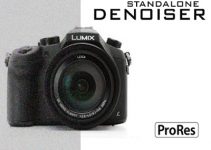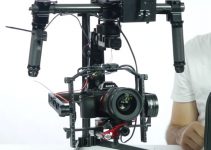One of the biggest sticking points of Sony’s a7 series for video is that they seemed to be stuck in 8-bit while Panasonic, Canon, and plenty of other affordable cameras were moving up to 10-bit or even raw recording. Luckily, that was solved with the release of the a7S III earlier this year. Does that mean that the a7 III and all our older 8-bit cameras are basically worthless now that 10-bit recording is here?
Filmmaker Sidney Diongzon asks a similar question: Can you even tell the difference between 8-bit and 10-bit footage? Putting together his own tests he wanted to know if average viewers would be able to notice.
I would say it’s both easy to see the difference and near impossible to tell – depending on the shot and if you know what to look for.
The first tests include a sky with a very strong gradient as the sun is hidden behind some buildings. Just looking at the sky you can see banding in the 8-bit footage while the 10-bit is nice and smooth. There is also some color weirdness going on.
The interesting thing is that since we are looking at compressed YouTube footage the 10-bit footage even has some problems in some of the more extreme shots. So in the end if all you are doing is going online the difference might not matter.
Where the filmmaker will see the issues is during the edit. As you can see in Premiere, Diongzon is able to push the color and exposure of the 10-bit footage without causing issues while the 8-bit footage shows banding and for some reason picks up a magenta tint.
The next shot he works on has similar issues, with his guess being the lack of color information as the cause of the color shift.
Moving from outdoors to a controlled indoor scene the differences are more difficult to pick out on first glance. You can still see the magenta in the shadows on the 8-bit footage and a little banding next to the light.
The 10-bit is very clean and natural looking. Still I think we have to consider that unless you are a filmmaker or a paying client you won’t notice these small things.
Without a doubt 10-bit is better. And you can see the difference. Paid work where you need to deliver clean footage to clients is where this matters. I would feel fine working with 8-bit footage still, but I think I’m going to stick to 10-bit when I work with my a7S III.
Do you think the 8-bit vs 10-bit thing is bigger than it really is or is 10-bit actually that much better?
[source: Sidney Diongzon]
Order Link:
- Sony Alpha a7S III Mirrorless Camera (B&H)
Disclaimer: As an Amazon Associate partner and participant in B&H and Adorama Affiliate programmes, we earn a small comission from each purchase made through the affiliate links listed above at no additional cost to you.
Claim your copy of DAVINCI RESOLVE - SIMPLIFIED COURSE with 50% off! Get Instant Access!




